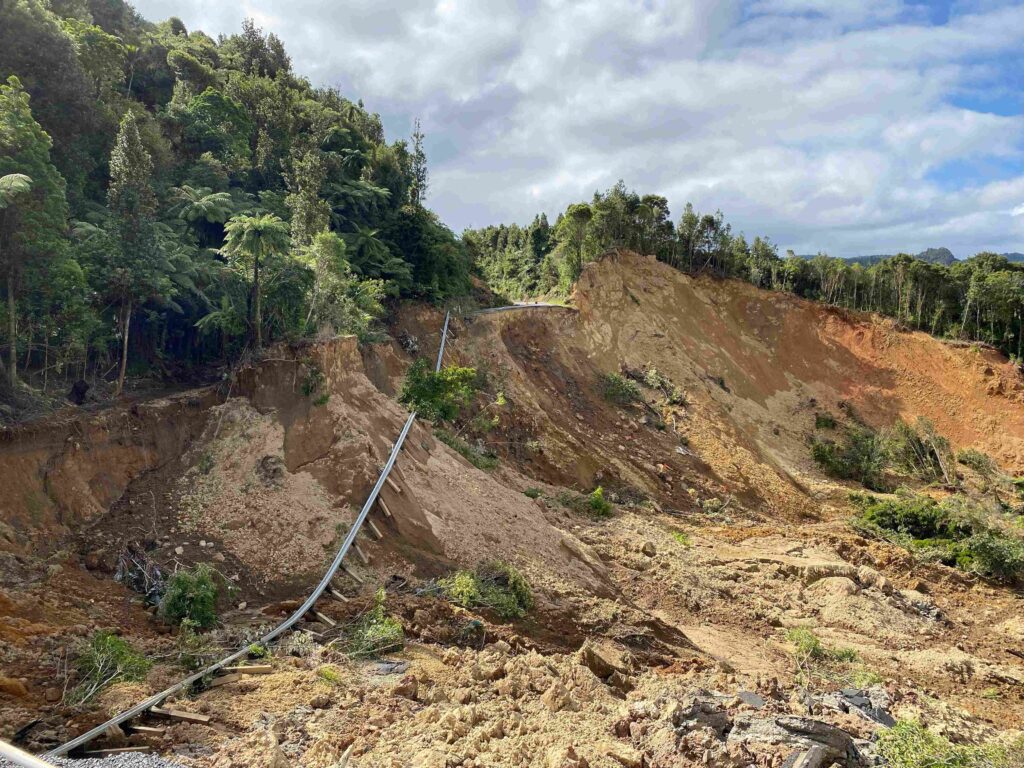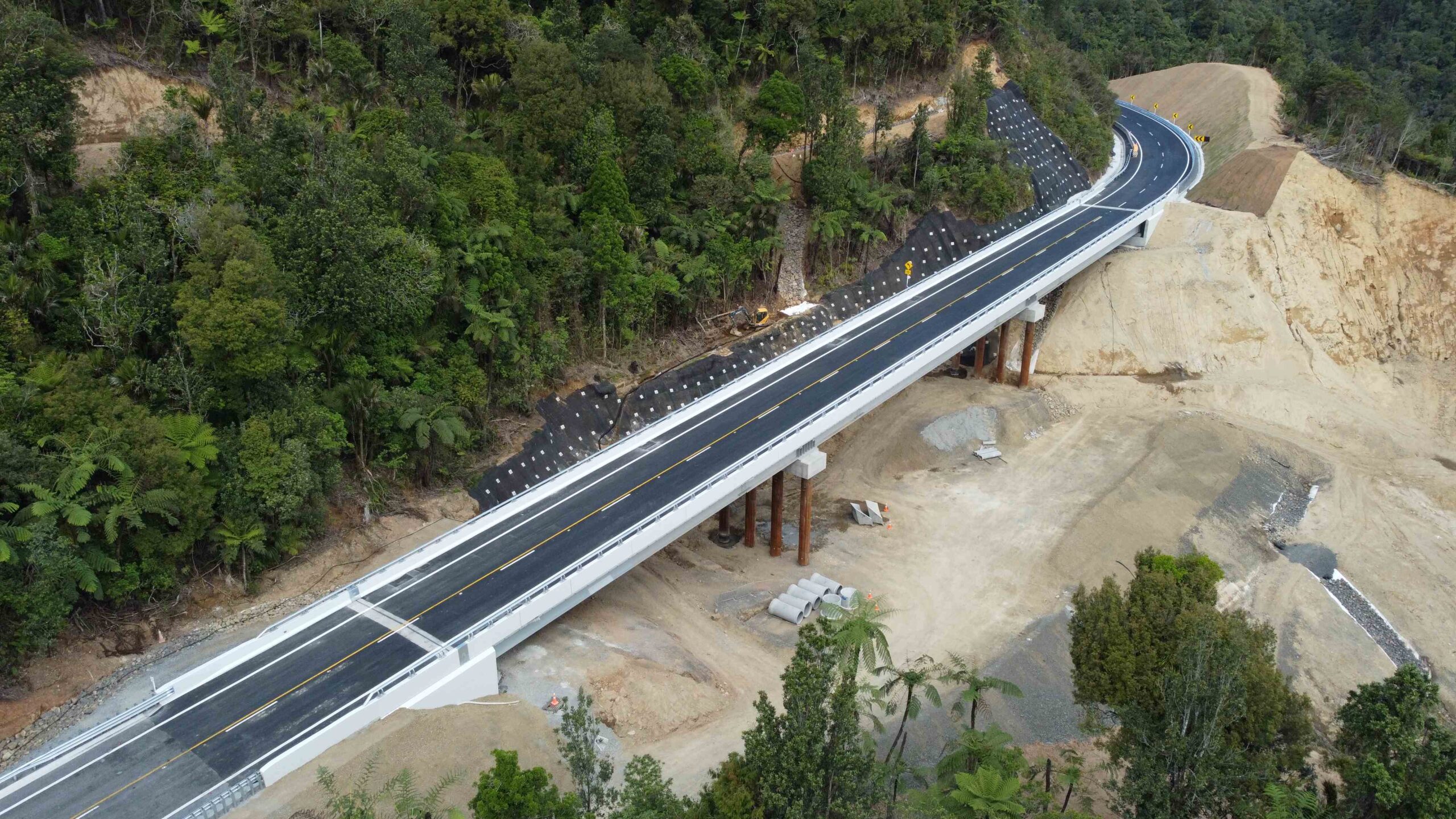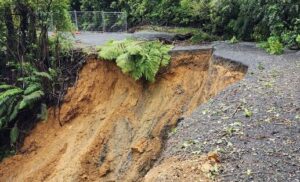It’s been a month since the $43 million Taparahi Bridge on state highway 25A was opened to the public, and while transcoastal travel is now back to normal for most people, there are still safety concerns when driving through the still-active construction site.
Traffic volume on the road has already returned to pre-slip levels, with approximately 7330 vehicles making the trip every day throughout the peak summer period.
Waka Kotahi NZ Transport Agency urged drivers to stick to the temporary speed limit of 50km per hour after complaints about chipped windscreens due to loose stones from the new chipseal.
“NZTA’s maintenance contractors received five complaints of chipped windscreens in December after the road opened,” regional manager of infrastructure delivery Jo Wilton said.
“All of the complaints related to stone being flicked up by passing traffic.
“New seal on any stretch of road takes time to bed-in and can have loose chip.”
The road has been swept several times in response, Jo said, and the agency has not received any further complaints.
Site workers have also complained of speeding drivers on Facebook, saying tailgating is making it difficult for them to turn safely into the construction site.

Meanwhile, there is still much to be done at the site around the bridge.
The hillside had collapsed during the cyclones last summer, taking 110m of road with it, as an overflowing culvert under the road caused the loosely-packed earth to become waterlogged.
New drainage infrastructure for the bridge is not yet completed and the roading team also needs to test the soil nails, construct fencing, tidy the site and remove temporary structures. The helipad and laydown area are also yet to be reinstated.
The rest of SH25A has also undergone a major facelift. NZTA said $30 million had been spent on recovery and maintenance along the highway, up from their initial budgeted figure of $25 million.

“We’ve taken advantage of the closure to repair damage caused by last summer’s storms and deliver an accelerated maintenance programme along the remainder of the route,” Jo said.
“This has included slip clearance and slope stabilisation, removal of hazardous vegetation, new culverts and side drains to improve management of surface run-off, strengthened bridges, new seal, road markings and signage. All this work improves the resilience of the highway.”
The bridge itself now features very deep supporting piles, soil nailing and earthworks designed to keep the road standing in the face of future weather events.
While the agency said it was proud of the job it had done to get SH25A open again ahead of schedule, Jo said this was unlikely to be the standard for future roading projects around the country due to the uniqueness of the situation.
“This was deemed emergency works which was given priority by all involved,” Jo said.
“A lot of overtime and nightwork was used… It should be noted that this increases project costs and requires a lot of management to keep everyone well and to avoid fatigue.”





